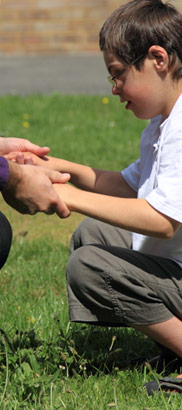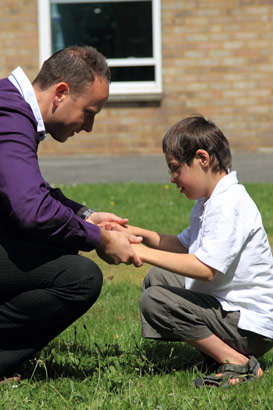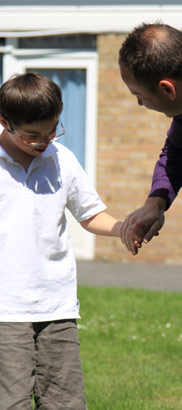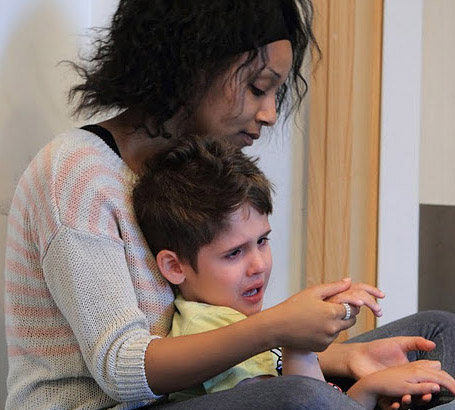
The educational aim of positive handling is not one of punishment or control
- it is to promote learning.
Within the context of the legal framework discussed in the previous
resource, schools should have an open, clear and transparent system of positive handling.
The system needs to support all those involved - children, parents and staff.
There is a wide variety of situations in which reasonable force might be appropriate, or necessary, to control or restrain
a child. These fall into three broad categories:
- Where action is necessary because there is an imminent risk of injury.
- Where there is a developing risk of injury, or significant damage
to property. - Where a pupil is behaving in a way that is compromising good order
and discipline.

Reasonable force should be based on providing the maximum
amount of care, control and therapeutic support, reflecting the message: "I care enough about you not to let you be out
of control."
Planned responses and techniques should be written out and included in individual behaviour support and intervention plans
or sometimes known as Personal Handling Plans.
Following a restraint there should be a supportive and reflective structure in place for both the staff and children involved.
All incidents using restraint are reported, recorded, monitored and evaluated.
The emphasis should be on caring, protecting and enhancing positive relationships.

Most of the time (95%) staff should use positive handling strategies to manage children's behaviour and emotional problems.
Positive handling strategies include physical and non-physical interventions. Examples include: the use of space; changes
to the environment; stance and posture; facial expressions; intonation; simple positive messages.
Much less often (5% of the time) staff may need to use physical interventions to manage children's behavioural and emotional
problems. Examples include: prompts; guides, escorts, holds; restraint.
In only a minority of cases (1% of the time) staff will need to use Restrictive Physical Intervention (RPI) to manage children's
behaviour and emotional problems. RPI is: 'the use of force to control a person's behaviour' (Department of Health and Department
for Education and Science Skills, RPI, July 2002).RPI is: 'the use
of force to control a persons behaviour' (Department of Health and Department for Education and Science Skills, RPI, July 2002). Examples include: prompts; guides, escorts, holds; restraint; RPI; personal safety, disengage techniques from dangerous or harmful physical contact (may involve
'minimal discomfort').

Restraint is the positive application of force by adults in order to overcome rigorous resistance and completely directing,
deciding and controlling a child's free movement.
The purpose of restraint should be to safeguard the child, other children or adults, or to prevent significant damage to property.
The proper use of restraint requires knowledge, understanding, skill and judgement.
Listen to this audio clip in which Andy, the headteacher of a special school, talks about using physical intervention in his school. He refers to Team Teach, which is the name of the particular approach used in his school.
How does Andy justify using physical restraint?
How is it used alongside other interventions?
What does he say about the continuum of intervention?
How is the effectiveness of intervention monitored?
Some answers
Physical restraint is used:
- Where children's behaviour poses a risk to the child and/or others
- In the child's best interest, to prevent their behaviour limiting the options available to them, and
- Is used alongside other outlets for frustration and a programme where skills and interests are developed
which makes unacceptable behaviour less likely.
There are graded and gradual levels of intervention and the minimum physical intervention is used for the least amount of time.
The impact of intervention in terms of improvements in children's behaviour is carefully monitored and evaluated.
Return

- The approach to positive handling in your school.
- Which forms are used to plan and record.
- Where records are kept.
- Risk assessment and management.
- Other related issues such as physical intervention and positive handling.
A good place to start is with your school's policy on these matters.
